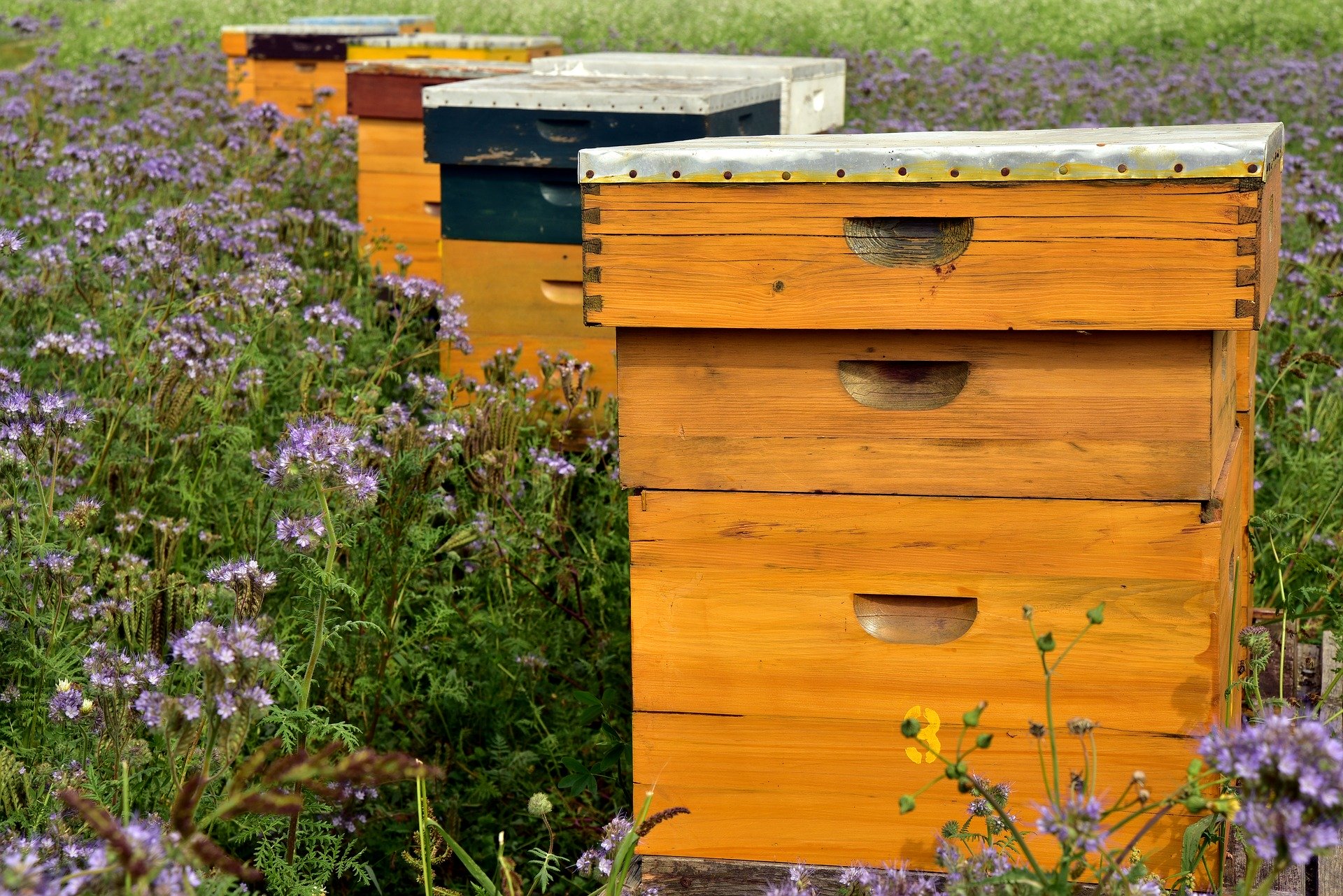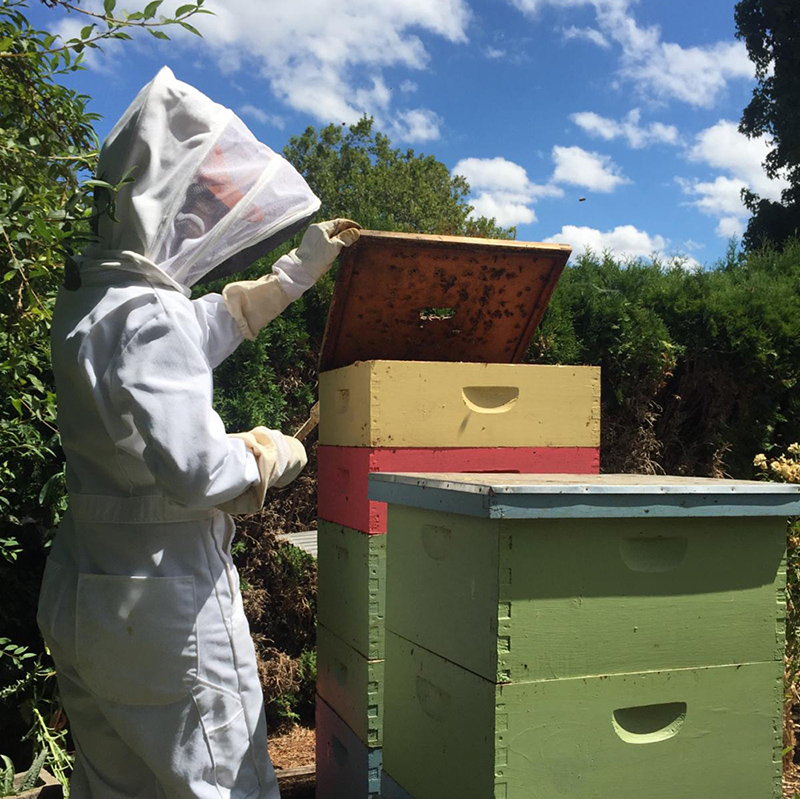Getting Started
We carry 10-frame Langstroth beekeeping equipment. Begin by deciding if you would like to keep your bees in deep or medium boxes. You also have the choice of plastic frames and foundation, wood frames and plastic foundation, or wood frames and beeswax foundation.
Equipment List
Hive stand
Easy to build with a couple cinder blocks, a hive stand raises the hive off of the ground, benefiting both the bees and beekeeper. An elevated hive results in less bending and is easier on your back, plus it keeps the hive safe from water damage.
Bottom Board
Think of the bottom board as the floor of your hive. It has an opening that provides an entrance and exit for the bees. Choose between a migratory bottom board and a screened bottom board.
Slatted Rack
Use between the bottom board and the hive body to give the bees extra space and ventilation.
Hive Body
The hive body typically consists of two deep boxes (a deep is 9 5/8” high). This is the brood chamber or nursery, where the queen lays her eggs and the brood is reared and colony stores the pollen and nectar (pantry). A deep full of bees, brood and honey can weigh up to 80 lbs. Another option is to use three medium boxes as they are lighter to lift.
Frames & Foundation
Frames hold the honeycomb or brood comb within the hive. The frames are paired with plastic wax-coated foundation or beeswax foundation. Wooden frames are “grooved” or wedged”. Grooved frames can only be used with plastic foundation. Wedged frames can be used with plastic or wax foundation. Purchase frames and foundation that correspond to the depth of box you are using.
Queen Excluder
Place over the brood chamber to keep the queen out of the honey supers.
Shallow or Medium Boxes
Shallow (5 3/4” high) or medium (6 5/8” high) boxes- also known as Illinois or Westerns are where bees store their excess honey, some of which is a sweet benefit for the beekeeper! Add boxes to your hive to allow more room for honey storage, as needed. A shallow box is about half the size of a deep box and can weigh up to 40 lbs, while a medium box can weigh up to 50 lbs. Medium boxes can also be used as hive bodies.
Inner Cover
Use an inner cover in conjunction with the telescoping outer cover to prevent the bees from propolizing (gluing) the outer cover to the hive. The center hole in the inner cover provides a glimpse into the hive for a quick inspection. If you see bees in the spring, they may need more space. If you see bees through the hole in winter, it means that they have moved up through their honey stores.
Outer Cover
Choose between a migratory cover or a telescoping top cover. The outer cover serves as the roof to the hive. The rim of a telescoping cover extends down over the hive body, offering more protection. Place a weight on the cover to keep it from blowing off in strong winds. Use an inner cover with the telescoping cover.
Feeder
Feeders are used to provide supplemental sugar syrup, or water. Sugar syrup is fed for several reasons; as a honey substitute to encourage comb building, to help bees prepare for overwintering, or if there is a shortage of food.
Mite Treatment
Varroa mites are the number one cause of colony death. We offer many different treatment options.
Entrance Reducer
Use to reduce the size of the hive entrance. Beekeepers may opt to protect a small hive population by reducing the entrance so that there is less space to defend from other bees or yellow jackets. Use an entrance reducer in the fall to prevent mice from overwintering.


